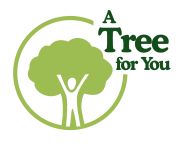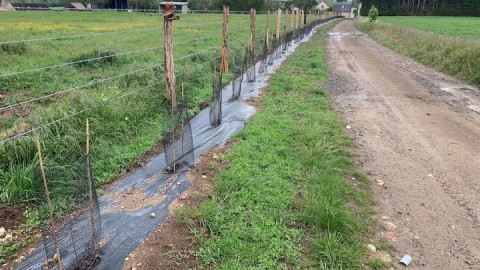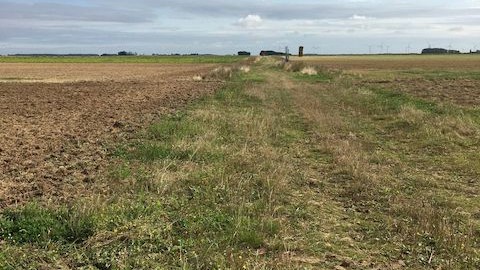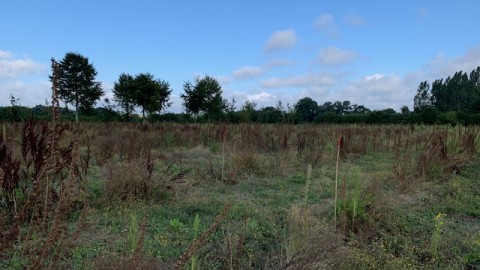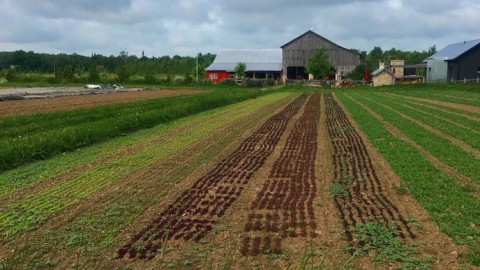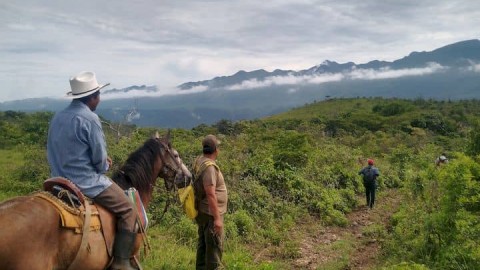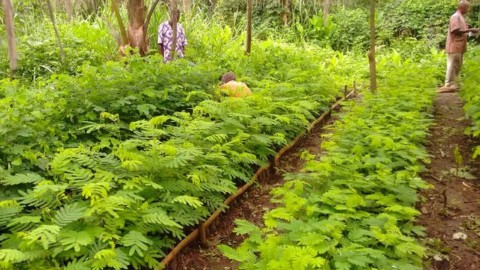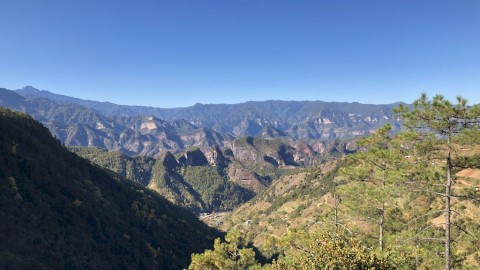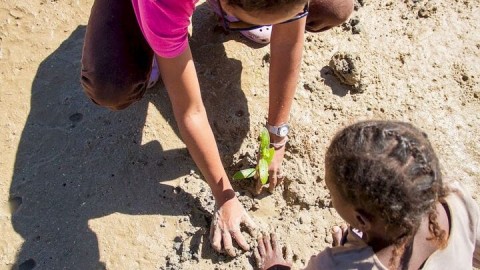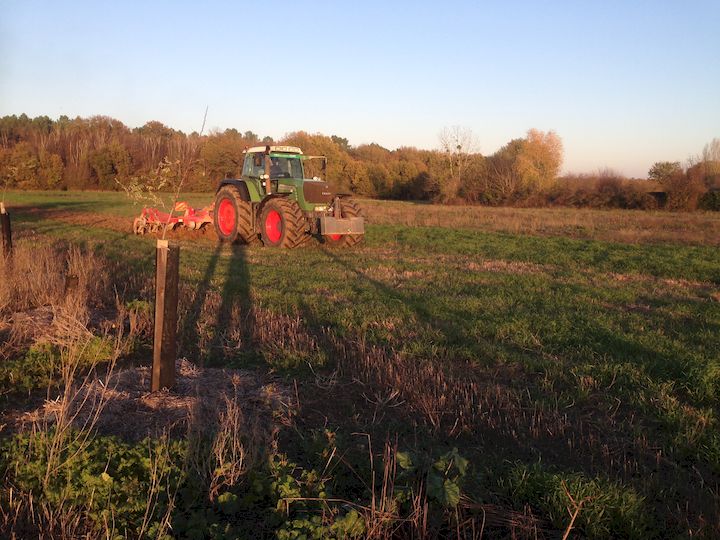
Background & challenges
Guillaume is a farmer living in Lavoux, a village in the Vienne department of France. For many years he headed an experimental station that tested introducing trees into agriculture: agroforestry. Today, keen to apply this system to his own plot of land, he has approached the French Agroforestry Association (AFAF) and A Tree for You (ATFY) for advice and support.
He plans to plant hedges around a 1.16 hectare plot of agroforestry land, which will produce fodder to feed the flock of a neighbouring shepherd as well as aromatic plants (blueberries at first).
The whole farm is run organically, without external inputs (except seeds) or tilling to improve natural soil fertility and promote biodiversity.
Guillaume is not a cattle farmer. He rents out part of his land to a neighbouring shepherd for a monthly rent. This process is a win-win for both parties: Guillaume gains extra income and his land is fertilised by the grazing sheep; the shepherd has land for grazing and taking care of his flock.
Planting hedgerows is part of an wider agroforestry management objective, supplementing the rows of trees already planted on the plot in 2020. The entire piece of land will form part of a network of agroforestry demonstration plots – to encourage other farmers to adopt this more sustainable farming system.
The hedgerows will have three layers of trees: so-called ‘high-branching’ trees, medium-height trees, and bushes. These hedges will protect the plot from prevailing winds, introduce biodiversity, create a microclimate, produce fruit, and clearly define the perimeter of the plot.
The project aims to sustainably plant 605 trees of 39 different species around Guillaume’s piece of land. It should deliver a great many benefits, namely:
- Production of aromatic plants, field crops, various types of fruit, fuelwood and timber.
- Grazing provided for a shepherd without land for his flock.
- Creation of a microclimate to boost the well-being of animals and provide better working conditions for the farmer.
- Enhanced biodiversity, especially local fauna and flora, by providing a habitat for auxiliary materials and birds as well as selecting species resilient to climate hazards.
- Addition of organic matter and carbon curbs soil erosion.
- Water retention in the leaves and roots of the hedging limits excess water on the land and improves water quality through catchment.
- Carbon storage on the plot.
Project type

Agroforestry
Beneficiaries

Guillaume, a farmer in the Vienne department of France
Number of trees

605 long-lasting trees to be planted
Species planted

39 different species
Partner

French Agroforestry Association (AFAF)
Timber:
- Torminal sapwood (3, or 0.5%)
- Sessile oak (6, or 1%)
- Cormier (5, or 0.8%)
- Cherry (6, or 1.0%)
- Lime tree (cordata) (5, or 0.8%)
Wood energy:
- Tauzin oak (30, or 5%)
- Pubescent oak (30, or 5%)
- Country maple (30, or 5%)
Biodiversity
- Wart birch (5, or 0.8%)
- Common hornbeam (5, or 0.8%)
- Hazelnut tree (20, or 3.3%)
- Country elm (5, or 0.8%)
- Wild pear tree (20, or 3.3%)
- Wild plum tree (15, or 2.5%)
- Myrobolan plum (10, or 1.7%)
- Willow marsault (10, or 1.7%)
- Red willow (10, or 1.7%)
- Elderberry black (5, or 0.8%)
- Wicker basket makers (2, or 0.3%)
- Spiny hawthorn (2, or 0.3%)
- Buckthorn (45, or 7.4%)
- Blood dogwood (45 or 7.4%)
- Male dogwood (10, or 1.7%)
- Dog rose (10, or 1.7%)
- European charcoal (57, or 9.4%)
- Purgative buckwheat (57, or 9.4%)
- Blackthorn (57, or 9.4%)
- Common privet (57, or 9.4%)
- Viorne lantane (15, or 2.5%)
- Viorne obier (10, or 1.7%)
Fruit trees:
- Grafted walnut (2, or 0.3%)
- Grafted chestnut (2, or 0.3%)
- Grafted apple (2, or 0.3%)
- Grafted pear (2, or 0.3%)
- Grafted cherry (2, or 0.3%)
- Quince (2, or 0.3%)
- Fig (2, or 0.3%)
- Common Nefal (2, or 0.3%)
- Almond (2, or 0.3%)
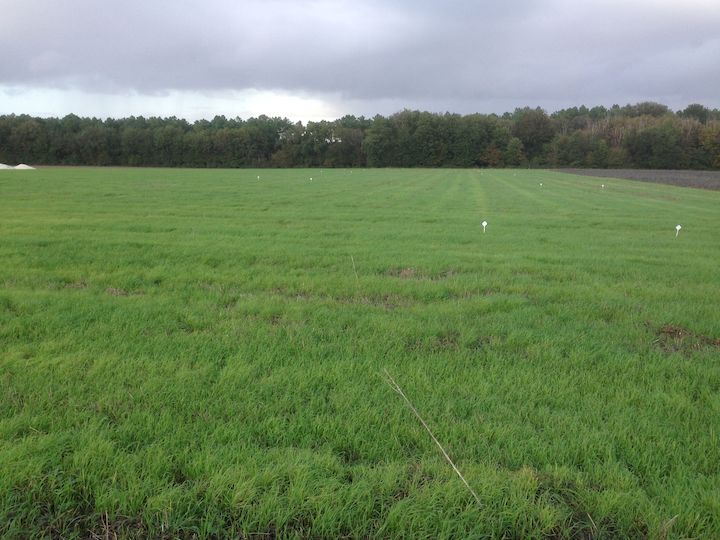
Works timeline
- 2020: soil preparation;
- 2020: planting the two hedges with high-branding trees, mulching and installing protective barriers;
- 2020 – 2023: monitoring and maintenance of plantations, replenishing if necessary;
- 2025: first fruit harvests.
Planting partner
The French Agroforestry Association (AFAF), set up in 2007 under 1901 French law, develops agroforestry in France for farming, in the political sphere, and with the general public. It is a platform for exchange and partnerships between farmers, agroforestry operators, researchers, political decision-makers, local authorities, and administrative bodies. The AFAF puts forward recommendations at both national and international levels and works to restore trees to farming systems.
Within this project, AFAF is in charge of technical follow-up with beneficiaries over time and providing information needed for communications.
Budget
The total budget to be collected is €12,402.5, i.e. €20.5 per lasting tree planted, broken down as follows:
- 95% allocated to the planting project:
- Plants and fillers: €1.8
- Mulching: €0.9
- Protection and stakes: €2.6
- Technical advice: €3.35
- Follow-up over three years: €2
- AFAF share: coordination, project management and communications: €5.8
- A Tree For You (14.75%) collection, monitoring and communications costs: €3.02
- Plus 5% (€1.03) to cover A Tree for You structural costs
The farmer is self-financing soil preparation, mulching, planting and maintenance of the plantations to the sum of €5.6 per tree, i.e. 21.45% of the total project cost.
